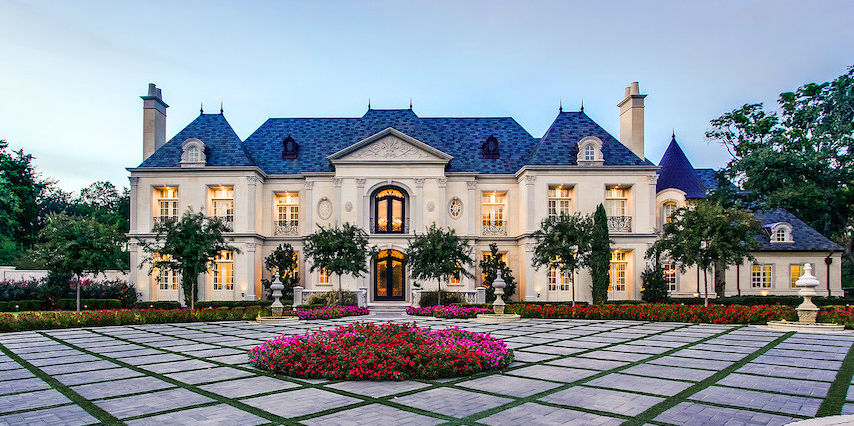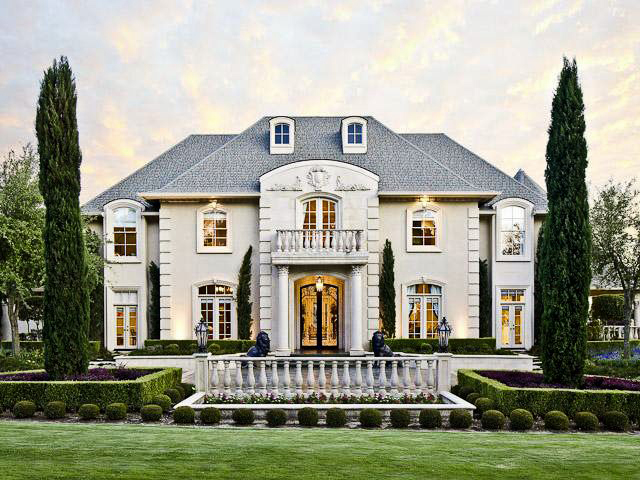French Renaissance Architecture is a stunning combination of traditional and Gothic components, bringing about a style that is both exquisite and lofty. This thriving time of imaginative and social advancement spread over the sixteenth and seventeenth hundreds of years, changing the French scene with its particular chateaux, royal residences, and nurseries.
Unveiling the Elegance
French Renaissance architecture is portrayed by its agreeable extents, complex ornamentation, and even plan. Old style impacts have large amounts of the utilization of segments, pilasters, curves, and pediments. Veneers are frequently luxuriously finished with figures, carvings, and different embellishments.
The Renaissance Rebirth
The Renaissance was a period of great intellectual and artistic revival in Europe. Inspired by the ancient world, scholars and artists rediscovered the principles of classical harmony and proportion. These ideals were soon reflected in the architecture of the time, with a shift away from the soaring Gothic style towards more balanced and rational forms.
The Historical Context
The French Renaissance concurred with a time of political and monetary soundness. The French government was at its level of force, and the nation partook in a thriving economy. This abundance and thriving gave the assets to finance aggressive building projects.
A Glimpse into the Past
French Renaissance architecture is a window into the past, offering insights into the values and aspirations of the era. The grand chateaux and palaces reflect the wealth and power of the French monarchy and aristocracy. The elegant gardens and public buildings attest to the importance placed on culture and education.
The Cultural and Artistic Renaissance
The French Renaissance was a time of great cultural and artistic flourishing. In addition to architecture, other art forms such as painting, sculpture, and literature flourished during this period. Many of the most celebrated artists of the Renaissance, such as Leonardo da Vinci, Michelangelo, and Raphael, worked in France at some point in their careers.

Key Architectural Characteristics
Harmony in Proportion
French Renaissance draftsmen were experts of extent, endeavoring to make structures that were both tastefully satisfying and basically sound. They utilized numerical standards to guarantee that all components of a structure, from the sections to the roofline, were in balance.
Intricate Ornamentation
French Renaissance architecture is known for its multifaceted ornamentation. Veneers and insides are frequently enhanced with intricate figures, carvings, and different embellishments. Famous themes incorporate traditional figures, grotesques, and botanical plans.
Symmetry and Balance
Symmetry and balance are essential principles of French Renaissance architecture. Buildings are typically arranged around a central axis, with corresponding elements on either side. This creates a sense of order and harmony.
Influence of Classicism
Classical architecture had a profound influence on French Renaissance architecture. Architects drew inspiration from the ancient world, incorporating elements such as columns, arches, and pediments into their architectures.
Richly Decorated Facades
French Renaissance exteriors are frequently extravagantly finished with models, carvings, and different embellishments. This embellishment filled both stylish and pragmatic needs. It assisted with shielding the structure from the components and furthermore conveyed the status and abundance of the proprietor.
Notable French Renaissance Architects
Philibert Delorme
Philibert Delorme was one of the most compelling French Renaissance engineers. He was liable for planning various significant structures, including the Château d’Anet and the Château de Fontainebleau. Delorme’s work is described by its agreeable extents and many-sided ornamentation.
Pierre Lescot
Pierre Lescot was another prominent French Renaissance draftsman. He is most popular for his work on the Louver Castle, which is viewed as one of the best instances of French Renaissance architecture. Lescot’s plans are described by their polish and complexity.
Jean Bullant
Jean Bullant was a French Renaissance planner who dealt with various significant tasks, including the Château d’écouen and the Château de Chambord. Bullant’s work is known for its intense and creative plans. He was likewise a skilled architect and mathematician, which is clear in his exact and proportional structures.
Androuet du Cerceau
Androuet du Cerceau was a French architect and engraver who published a number of influential books on architecture. His work helped to spread the French Renaissance style throughout Europe. Du Cerceau’s architectures are characterized by their eclectic mix of classical and Gothic elements.
Iconic Structures
The Louvre Palace
The Louver Royal residence is perhaps of the most famous milestone in Paris and a great representation of French Renaissance architecture. The royal residence was initially inherent the twelfth hundred years as a post, however it was broadly renovated during the Renaissance. The most well known element of the Louver is its east exterior, which was planned by Pierre Lescot in the sixteenth hundred years. The veneer is improved with a corridor of Corinthian sections and a progression of mind boggling models.
Château de Chambord
The Château de Chambord is quite possibly of the most popular estate in the Loire Valley. It was underlying the sixteenth hundred years for Lord Francis I and is viewed as one of the best instances of French Renaissance architecture. The house is known for its enormous scope, its intricate ornamentation, and its interesting plan.
The Château de Chambord is organized around a focal keep, which is flanked by four corner towers. The keep is topped by a particular twofold winding flight of stairs, which is said to have been propelled by crafted by Leonardo da Vinci. The estate’s exterior is improved with a corridor of Corinthian segments and a progression of complex models.
The École de Medicine in Paris
The École de Medication in Paris was implicit the sixteenth hundred years and is one more outstanding illustration of French Renaissance architecture. The structure is known for its rich exterior, which is enlivened with a corridor of Ionic sections and a progression of pilasters. The veneer is likewise decorated with various models, including a figure of Aesculapius, the Greek divine force of medication.
The Château de Fontainebleau
The Château de Fontainebleau is a renowned domain organized in the town of Fontainebleau, around 60 kilometers southeast of Paris.It was initially implicit the twelfth hundred years, yet it was widely rebuilt during the Renaissance. The house is known for its rich insides and its wonderful nurseries.
The Château de Fontainebleau was a most loved home of the French government during the Renaissance. It was here that Lord Francis I invited his visitors, including Leonardo da Vinci, who passed on at the manor in 1519. The house’s inside is enhanced with various paintings and frescoes, a large number of which were made by Italian specialists during the Renaissance.
Regional Variations
French Renaissance architecture exhibited some regional variations. For example, the Loire Valley style is characterized by its elegant chateaux with tall towers and steep roofs. The Provençal style is influenced by the region’s Mediterranean climate, with its use of light-colored stone and open-air courtyards. Northern France is known for its brick-built chateaux with Flemish influences.
Sculpture and Decorative Arts
Form and enriching expressions assumed a significant part in French Renaissance architecture. Exteriors and insides were frequently enhanced with intricate figures, carvings, and different embellishments. Well known themes included old style figures, grotesques, and botanical plans.
The Role of Sculpture
Form was utilized to enhance both the outsides and insides of French Renaissance structures. Sculptures, reliefs, and other sculptural components were utilized to add interest and visual enticement for structures. Form was additionally used to pass emblematic importance and on to praise the accomplishments of the benefactor.
Stucco and Plasterwork
Stucco and plasterwork were also widely used in French Renaissance architecture. These materials were used to create intricate decorative elements such as ceilings, cornices, and fireplaces. Stucco and plasterwork were often painted or gilded, adding to the opulence of Renaissance interiors.
Tapestries and Furniture
Tapestries and furniture were also important elements of French Renaissance decorative arts. Tapestries were used to cover walls and floors, and furniture was often elaborately carved and decorated. Tapestries and furniture served both practical and aesthetic purposes. They helped to keep buildings warm and comfortable, and they also displayed the wealth and status of the owner.
Painted Ceilings and Murals
Painted rooftops and canvases were another huge part of French Renaissance embellishing articulations. These magnum opuses were commonly dispatched by well off allies to complete their homes and palaces. Painted rooftops and compositions depicted various subjects, including severe scenes, old style fables, and figurative figures.

Summary
French Renaissance architecture is a stunning combination of traditional and Gothic components, bringing about a style that is both exquisite and lofty. This thriving time of imaginative and social advancement spread over the sixteenth and seventeenth hundreds of years, changing the French scene with its particular chateaux, royal residences, and nurseries.
French Renaissance architecture is portrayed by its amicable extents, unpredictable ornamentation, and even plan. Old style impacts have large amounts of the utilization of segments, pilasters, curves, and pediments. Veneers are frequently luxuriously finished with figures, carvings, and different embellishments.
French Renaissance gardens were an impression of the goals of the Renaissance, underlining concordance, extent, and excellence. Gardens were likewise viewed as a method for interfacing with nature and to make a feeling of harmony and quietness. French Renaissance gardens were normally formal and even, with a focal pivot and relating components on one or the other side. Gardens were frequently separated into various segments, like a parterre, a woods of trees, and a plantation. Wellsprings, water elements, and nursery models were likewise normal highlights of Renaissance gardens.
French Renaissance architecture and gardens affected the advancement of Western architecture and scene plan. The French Renaissance style was embraced by draftsmen and scene creators all through Europe, and it can in any case be seen in numerous structures and gardens today.
A Glimpse Back in Time
At the point when we visit the notable milestones and nurseries of the French Renaissance, we are moved back so as to a time of extraordinary social and creative thriving. We can envision the lords, sovereigns, and aristocrats who once strolled these lobbies and gardens, and we can see the value in the excellence and polish of the Renaissance style.
Rediscovering French Renaissance Beauty
The French Renaissance is an indication of the rich social and creative legacy of France. It is a period of incredible excellence and development, and its heritage keeps on motivating us today.
FAQS
What is French Renaissance architecture, and when did it arise?
French Renaissance architecture is a style that evolved during the 16th century in France. It’s characterized by a fusion of classical elements with intricate ornamentation, creating an exquisite and harmonious architectural form.
What are the key features of French Renaissance architecture?
French Renaissance architecture is known for its use of classical orders, such as Doric, Ionic, and Corinthian columns, as well as intricate carvings, statues, and steeply pitched roofs. It often incorporates symmetrical facades and intricate detailing.

